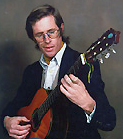 Hannemann’s Music Corner: Beginning Music – Continuing Music
Hannemann’s Music Corner: Beginning Music – Continuing MusicSummer has near flown and lo and behold the school year is upon us. For many students that means “do I start band or orchestra?” and/or “do I continue with band or orchestra?” It turns out the answer to one is the answer to the other.
After lo these many years I’ve figured out that if you live long enough, you will use everything you ever learned about anything. There comes a time when one can look at where one is and, looking back a bit, ask, “Wow, who knew?” It seems then true that educating young people is a matter of preparing them for a future that adults will never know nor can even guess at and that a broad in-depth general education is probably a good idea. There is more to life than reading, writing, math and science.
But if a musical education is important, why not simply take piano or guitar lessons, or why not general music? Why participate in band or orchestra?
One very good reason is the same as why we have our kids involved in sports – band and orchestra are, essentially, team sports and teach the same things: working with others to accomplish a mutual goal, improving one’s skills towards this end whilst considering how what you are doing meshes with what someone else is doing thereby learning to think beyond self, and the poise and confidence that comes from performing those skills for an audience.
Music, beyond a simple melody, is rather complex. Every note co-exists with, defines/is defined by, and interacts with every other note – horizontally as in melody, vertically as in harmony, and temporally. And these are dynamic relationships, not static. Thus, the music in measure one has a great deal to do with the music in measure 239. The trumpet part in measure 26 relates then to the rest of the trumpet part for the piece whilst also relating to the part played by every other instrument in the ensemble at each measure and across the whole.
Music then teaches to think logically in a non-linear manner on different dimensions across the whole and within the specifics as they attain to the whole. This is a whole other way of thinking ─ the kind of thinking which allows one to see the forest for the trees, the trees for the forest, and the combination thereof.
It teaches logical anticipation of what might likely come next, and what might come next which though not likely is still the logical result of what has come before. In this way learning to play music is rather akin to learning to play chess, and three dimensional chess at that, with the addition of multiple players upon whom you must rely.
Given all of that, music goes beyond team sport. It is a matter of team puzzle solving, with each element and each player a part of the over-all puzzle. The benefits of learning this kind of thinking apply in myriad ways regardless of the puzzle to be worked, with the additional benefit of working non-verbal puzzles. If there is a relationship twixt music and math, it is this non-verbal aspect.
A further benefit is learning to think non-visually. Music attunes, enhances, educates, and refines the sense of hearing. In the ensemble, in order to know what the other team mates are doing one must listen and learn to separate the sounds heard in a meaningful way. Not only then, is the hearing refined, but as well the imagination – the ability to think and understand without visual clues. This becomes particularly true when one is “jamming,” i.e. composing/arranging on the fly with others.
These various benefits of a music education cannot be attained in a short time frame, say a semester or a year. They take time as a process of cognitive development, tracking with the cognitive development of childhood to early adulthood.
The longer your child continues musical education, the greater the benefits ─ benefits which will be applicable throughout their lifetime in any and every endeavor.

